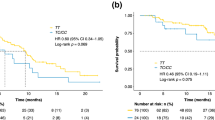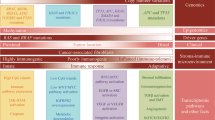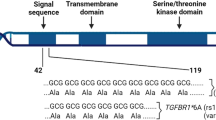Abstract
Associations between HLA-DRB1*07:01 and lapatinib-induced hepatotoxicity have been reported. To consolidate the results from all available reports in scientific databases, systematic review and meta-analysis techniques were used to quantify these associations. Studies investigating associations between HLA-DRB1*07:01 and lapatinib-induced hepatotoxicity were systematically searched in PubMed, Human Genome Epidemiology Network, and the Cochrane Library. Primary outcomes were the associations between HLA-DRB1*07:01 and lapatinib-induced hepatotoxicity. Overall odds ratios (ORs) with the corresponding 95%CIs were calculated using a random-effect model to determine the associations between HLA-DRB1*07:01 and lapatinib-induced hepatotoxicity. A clear association between HLA-DRB1*07:01 and lapatinib-induced hepatotoxicity was identified in our analyses. The summary OR was 6.23 (95%CI = 4.11–9.45). Similar associations were also found in the subgroup analyses by lapatinib treatment regimens. ORs were 10.04 (95%CI = 6.15–16.39), 8.65 (95%CI = 4.52–16.58), and 3.88 (95%CI = 2.20–6.82) in the lapatinib group, lapatinib + trastuzumab group, and lapatinib + chemotherapy or lapatinib + trastuzumab + chemotherapy group, respectively. Since HLA-DRB1*07:01 is associated with lapatinib-induced hepatotoxicity, genetic screening of HLA-DRB1*07:01 in breast cancer patients prior to lapatinib therapy is warranted for patient safety. In addition, further studies should define the risk of HLA-DRB1*07:01 and lapatinib-induced hepatotoxicity in specific ethnicities.
This is a preview of subscription content, access via your institution
Access options
Subscribe to this journal
Receive 6 print issues and online access
$259.00 per year
only $43.17 per issue
Buy this article
- Purchase on Springer Link
- Instant access to full article PDF
Prices may be subject to local taxes which are calculated during checkout


Similar content being viewed by others
References
Organization WH Breast cancer: prevention and control 2018 [cited 2018 March, 5]. Available from: http://www.who.int/cancer/detection/breastcancer/en/.
Kumler I, Tuxen MK, Nielsen DL. A systematic review of dual targeting in HER2-positive breast cancer. Cancer Treat Rev. 2014;40:259–70.
Xin Y, Guo WW, Huang Q, Zhang P, Zhang LZ, Jiang G, et al. Effects of lapatinib or trastuzumab, alone and in combination, in human epidermal growth factor receptor 2-positive breast cancer: a meta-analysis of randomized controlled trials. Cancer Med. 2016;5:3454–63.
Medina PJ, Goodin S. Lapatinib: a dual inhibitor of human epidermal growth factor receptor tyrosine kinases. Clin Ther. 2008;30:1426–47.
Cetin B, Benekli M, Dane F, Boruban C, Gumus M, Oksuzoglu B, et al. Lapatinib plus capecitabine for HER2-positive advanced-stage breast cancer in elderly women: review of the Anatolian Society of Medical Oncology (ASMO) experience. Breast Care. 2013;8:67–70.
National Cancer Institute. FDA Approval for Lapatinib Ditosylate [updated January 14, 2011; cited2018 Feburary 19]. Available from: https://www.cancer.gov/about-cancer/treatment/drugs/fda-lapatinib.
Moy B, Goss PE. Lapatinib: current status and future directions in breast cancer. Oncologist. 2006;11:1047–57.
Liao J, Gallas M, Pegram M, Slingerland J. Lapatinib: new opportunities for management of breast cancer. Breast Cancer. 2010;2:79–91.(Dove Med Press).
MacFarlane RJ, Gelmon KA. Lapatinib for breast cancer: a review of the current literature. Exp. Opin drug Saf. 2011;10:109–21.
Peroukides S, Makatsoris T, Koutras A, Tsamandas A, Onyenadum A, Labropoulou-Karatza C, et al. Lapatinib-induced hepatitis: a case report. World J Gastroenterol. 2011;17:2349–52.
Moy B, Rappold E, Williams L, Kelly T, Nicolodi L, Maltzman JD, et al. Hepatobiliary abnormalities in patients with metastatic cancer treated with lapatinib. J Clin Oncol. 2009;27(15S):1043.
Somkrua R, Eickman EE, Saokaew S, Lohitnavy M, Chaiyakunapruk N. Association of HLA-B*5801 allele and allopurinol-induced Stevens Johnson syndrome and toxic epidermal necrolysis: a systematic review and meta-analysis. BMC Med Genet. 2011;12:118.
Tangamornsuksan W, Chaiyakunapruk N, Somkrua R, Lohitnavy M, Tassaneeyakul W. Relationship between the HLA-B*1502 allele and carbamazepine-induced Stevens-Johnson syndrome and toxic epidermal necrolysis: a systematic review and meta-analysis. JAMA Dermatol. 2013;149:1025–32. Sep 1
Tangamornsuksan W, Lohitnavy O, Kongkaew C, Chaiyakunapruk N, Reisfeld B, Scholfield NC, et al. Association of HLA-B*5701 genotypes and abacavir-induced hypersensitivity reaction: a systematic review and meta-analysis. J Pharm Pharm Sci. 2015;18:68–76.
Tangamornsuksan W, Scholfield N, Lohitnavy M. Association between HLA genotypes and oxcarbazepine-induced cutaneous adverse drug reactions: a systematic review and meta-analysis. J Pharm Pharm Sci. 2018;21:1–18.
Tangamornsuksan W, Lohitnavy M. Association between HLA-B*1301 and dapsone-induced cutaneous adverse drug reactions: a systematic review and meta-analysis. JAMA Dermatol. 2018;154:441–6.
Tangamornsuksan W, Lohitnavy M. Association between HLA-B*5901 and methazolamide-induced Stevens–Johnson syndrome/toxic epidermal necrolysis: a systematic review and meta-analysis. Pharmacogenomics J. 2019;19:286–94.
Spraggs CF, Budde LR, Briley LP, Bing N, Cox CJ, King KS, et al. HLA-DQA1*02:01 is a major risk factor for lapatinib-induced hepatotoxicity in women with advanced breast cancer. J Clin Oncol: Off J Am Soc Clin Oncol. 2011;29:667–73.
Schaid DJ, Spraggs CF, McDonnell SK, Parham LR, Cox CJ, Ejlertsen B, et al. Prospective validation of HLA-DRB1*07:01 allele carriage as a predictive risk factor for lapatinib-induced liver injury. J Clin Oncol: Off J Am Soc Clin Oncol. 2014;32:2296–303.
Parham LR, Briley LP, Li L, Shen J, Newcombe PJ, King KS, et al. Comprehensive genome-wide evaluation of lapatinib-induced liver injury yields a single genetic signal centered on known risk allele HLA-DRB1*07: 01. Pharm J. 2016;16:180–5.
Spraggs CF, Parham LR, Briley LP, Warren L, Williams LS, Fraser DJ, et al. Characterisation of the HLA-DRB1*07:01 biomarker for lapatinib-induced liver toxicity during treatment of early-stage breast cancer patients with lapatinib in combination with trastuzumab and/or taxanes. Pharmacogenomics J. 2018;18:480–6.
Smits K, Schouten J, Smits L, Stelma F, Nelemans P, Prins M. A review on the design and reporting of studies on drug-gene interaction. J Clin Epidemiol. 2005;58:651–4.
Thakkinstian A, McElduff P, D’Este C, Duffy D, Attia J. A method formeta-analysis of molecular association studies. Stat Med. 2005;24:1291–306.
Wells G, Shea B, O’Connell D, Peterson J, Welch V, Losos M, et al. The Newcastle-Ottawa Scale (NOS) for assessing the quality of nonrandomised studies in meta-analyses 2011 http://www.ohri.ca/programs/clinical_epidemiology/oxford.asp.
DerSimonian R, Laird N. Meta-analysis in clinical trials. Control Clin Trials. 1986;7:177–88.
Higgins J, Thompson S. Quantifying heterogeneity in a meta-analysis. Stat Med. 2002;21:1539–58.
Higgins J, Thompson S, Deeks J, Altman D. Measuring inconsistency in meta-analyses. BMJ. 2003;327:557–60. Sep 6
Goss PE, Smith IE, O’Shaughnessy J, Ejlertsen B, Kaufmann M, Boyle F, et al. Adjuvant lapatinib for women with early-stage HER2-positive breast cancer: a randomised, controlled, phase 3 trial. Lancet Oncol. 2013;14:88–96.
Piccart-Gebhart M, Holmes E, Baselga J, de Azambuja E, Dueck AC, Viale G, et al. Adjuvant lapatinib and trastuzumab for early human epidermal growth factor receptor 2-positive breast cancer: results from the randomized phase III adjuvant lapatinib and/or trastuzumab treatment optimization trial. J Clin Oncol: Off J Am Soc Clin Oncol. 2016;34:1034–42.
Liberati A, Altman DG, Tetzlaff J, Mulrow C, Gotzsche PC, Ioannidis JP, et al. The PRISMA statement for reporting systematic reviews and meta-analyses of studies that evaluate health care interventions: explanation and elaboration. PLoS Med. 2009;6:e1000100.
Shah RR, Morganroth J, Shah DR. Hepatotoxicity of tyrosine kinase inhibitors: clinical and regulatory perspectives. Drug Saf. 2013;36:491–503.
Bunchorntavakul C, Reddy KR. Drug hepatotoxicity: newer agents. Clin liver Dis. 2017;21:115–34.
Teo YL, Ho HK, Chan A. Formation of reactive metabolites and management of tyrosine kinase inhibitor-induced hepatotoxicity: a literature review. Exp Opin Drug Metab Toxicol. 2015;11:231–42.
Spraggs CF, Parham LR, Hunt CM, Dollery CT. Lapatinib-induced liver injury characterized by class II HLA and Gilbert’s syndrome genotypes. Clin Pharmacol Ther. 2012;91:647–52.
Hirasawa M, Hagihara K, Okudaira N, Izumi T. The possible mechanism of idiosyncratic lapatinib-induced liver injury in patients carrying human leukocyte antigen-DRB1*07:01. PloS ONE. 2015;10:e0130928.
Ghattaoraya GS, Middleton D, Santos EJ, Dickson R, Jones AR, Alfirevic A. Human leucocyte antigen-adverse drug reaction associations: from a perspective of ethnicity. Int J Immunogenet. 2017;44:7–26.
Gonzalez-Galarza FF, Takeshita LY, Santos EJ, Kempson F, Maia MH, da Silva AL, et al. Allele frequency net 2015 update: new features for HLA epitopes, KIR and disease and HLA adverse drug reaction associations. Nucleic acids Res. 2015;43:D784–8. (Database issue)
Mallal S, Phillips E, Carosi G, Molina JM, Workman C, Tomazic J, et al. HLA-B*5701 screening for hypersensitivity to abacavir. New Engl J Med. 2008;358:568–79.
Mushiroda T, Takahashi Y, Onuma T, Yamamoto Y, Kamei T, Hoshida T, et al. Association of HLA-A*31:01 screening with the incidence of carbamazepine-induced cutaneous adverse reactions in a Japanese population. JAMA Neurol. 2018;75:842–9.
Acknowledgements
This research did not receive any specific grant from funding agencies in the public, commercial, or not-for-profit sectors.
Author information
Authors and Affiliations
Contributions
All authors had full access to all of the data in the study and take responsibility for the integrity of the data and the accuracy of the data analysis. Statistical analysis: Dr Tangamornsuksan. Study supervision: Dr Lohitnavy. Study concept and design: Dr Tangamornsuksan, Dr Kongkaew and Dr Lohitnavy. Acquisition, analysis, and interpretation of data: Dr Tangamornsuksan, Dr Kongkaew and Dr Lohitnavy. Drafting of the manuscript: Dr Tangamornsuksan, Dr Scholfield and Dr Lohitnavy. Critical revision of the manuscript for important intellectual content: Dr Scholfield and Dr Lohitnavy.
Corresponding author
Ethics declarations
Conflict of interest
The authors declare that they have no conflict of interest.
Additional information
Publisher’s note: Springer Nature remains neutral with regard to jurisdictional claims in published maps and institutional affiliations.
Rights and permissions
About this article
Cite this article
Tangamornsuksan, W., Kongkaew, C., Scholfield, C.N. et al. HLA-DRB1*07:01 and lapatinib-induced hepatotoxicity: a systematic review and meta-analysis. Pharmacogenomics J 20, 47–56 (2020). https://doi.org/10.1038/s41397-019-0092-2
Received:
Revised:
Accepted:
Published:
Issue Date:
DOI: https://doi.org/10.1038/s41397-019-0092-2



